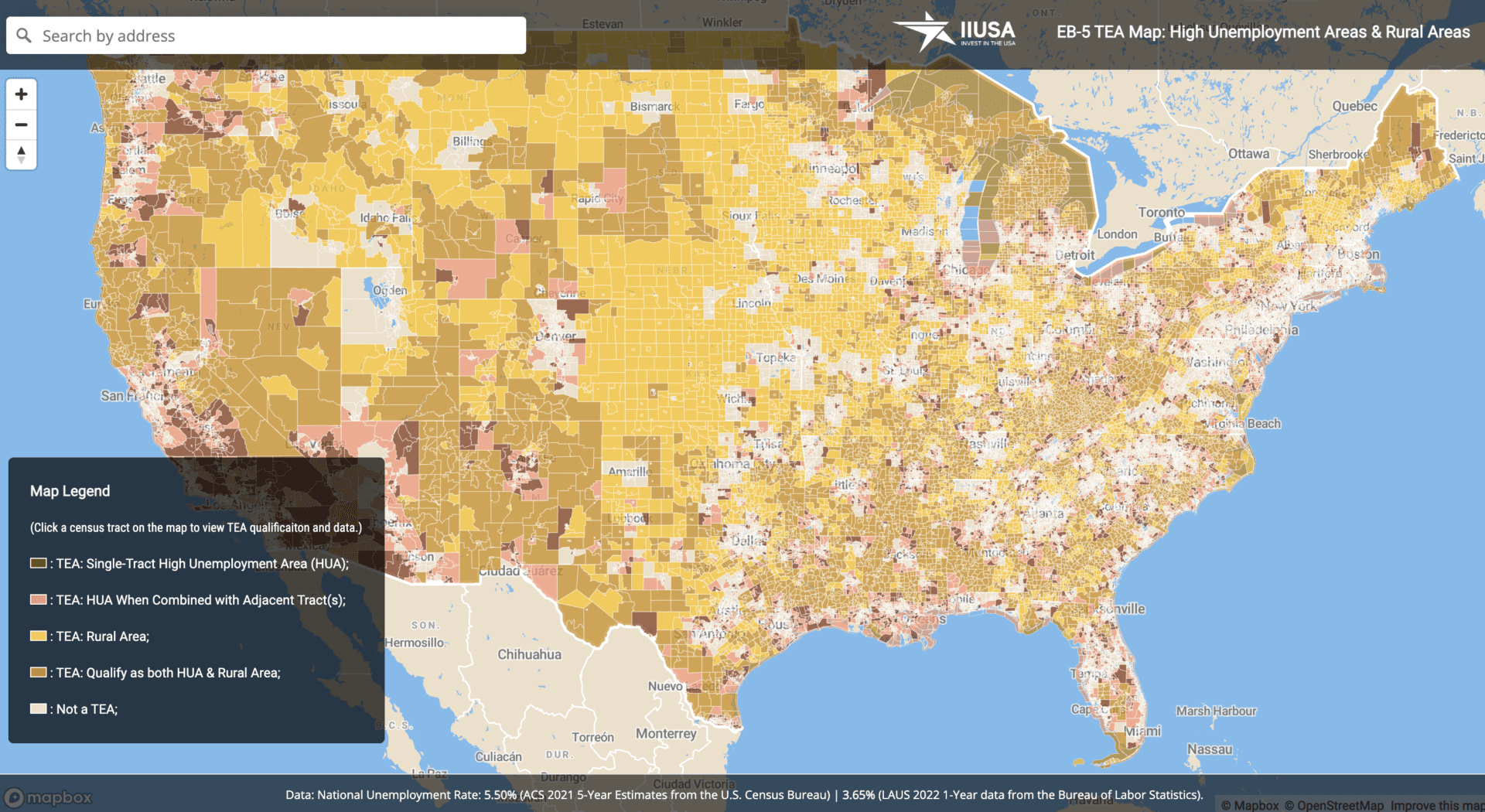(Click here to read and download the full report in PDF format)
On July 21, 2023, the U.S. Office of Management and Budget (OMB) published revised delineations for the country’s Core Based Statistical Areas (CBSAs).[1] First the first time in the past 3 years, OMB updated the geographic composition for the Metropolitan Statistical Areas (MSAs), Micropolitan Statistical Areas, Combined Statistical Areas, and Metropolitan Division across the nation. This adjustment has a significant impact to the EB-5 industry because the revised delineations determine whether a county/county equivalent continues to be part of an MSA, affecting a location’s eligibility of qualifying as an EB-5 rural area.[2]
Upon analysis of the redefined delineations, we found that 48 counties across 25 states were removed from their previous MSA designations, which offers new opportunities for rural EB-5 projects. In contrast, we also identified 54 counties that were added into some newly defined MSAs, disqualifying any locations within these counties from continuing to be an EB-5 rural area.[3]
Counties Removed from an MSA
According to the updated delineations, a total of 48 counties across 25 states that were part of an MSA are now no longer included in any MSA designations, offering new opportunities for rural area qualification. For example, Sussex County, DE with a population of over 237,300 is no longer part of an MSA and all census tracts within the county now qualifies as a rural area. Additionally, Monroe County and Mercer County in Pennsylvania, both have a population of more than 110,000, now qualify as a rural area in their entirety.
See Table 2 below for a list of counties with populations exceeding 50,000 now no longer part of an MSA under the revised delineations. The full list can be found on Table 4 in Exhibit A of the full report.
Counties Added to a Newly Defined MSA
Our data analysis also found that 54 counties that were not part of any MSA are now integrated into newly defined MSAs. This shift indicates that locations in these counties are no longer eligible for rural EB-5 projects. A notable illustration can be found in Bozeman, MT, a locality encompassing Gallatin County, which has now been accorded MSA status. This change disqualifies all census tracts within Gallatin County, MT from being eligible to be an EB-5 rural area.
See Table 3 below highlighted a list of counties that were previously outside any MSA but now are included in a newly formed MSA under the 2023 revised delineations. The full list can be found on Table 5 in Exhibit A of the full report.
Overview by State
Overall, the revised MSA delineations affected 102 counties across 34 states. In particular, states such as North Carolina, Pennsylvania, Illinois, and Arkansas saw the most counties in the state being removed from an MSA and thereby engendering fresh prospects for rural EB-5 projects. In contrast, the states of Texas, Kentucky, Michigan, and Montana have the highest number of counties in the state being added to newly defined MSAs in the region. Figure 1 below summarized the number of counties affected by the revised MSA delineations, as categorized by state.
(Click here to read and download the full report in PDF format)
IIUSA TEA Mapping Tool
Featuring the latest unemployment data from both ACS and LAUS as well as the revised MSA delineations, IIUSA’s EB-5 TEA Mapping Tool is now updated in accordance with the new rural area qualifications.
Among many features, IIUSA’s free EB-5 TEA mapping tool empowers you to:
- Search any location in the U.S. to check for TEA qualification;
- Review all TEA opportunities in any given area (including a city, county, MSA, or state);
- View whether any location qualifies as a single-tract high unemployment area, multi-tract high unemployment area, or rural area; and
- Retrieve the latest ACS and LAUS employment statistics for any census tract.
Thanks to the support of IIUSA’s members and our TEA Mapping Tool sponsor Baker Tilly, IIUSA’s EB-5 TEA Mapping Tool is available to the public for free here: https://iiusa.org/eb5_tea_mapping_tool
—–
[1] OMB Bulletin No. 23-01. https://www.whitehouse.gov/wp-content/uploads/2023/07/OMB-Bulletin-23-01.pdf
[2] An EB-5 rural area is any area other than an area within a standard metropolitan statistical area (MSA) or within the outer boundary of any city or town having a population of 20,000 or more based on the most recent decennial census.
[3] Our analysis at this report does not include the planning regions in Connecticut that were newly established in June 2022. Read more about the Connecticut’s planning regions here: https://portal.ct.gov/OPM/IGPP/ORG/Planning-Regions/Planning-Regions—Overview













